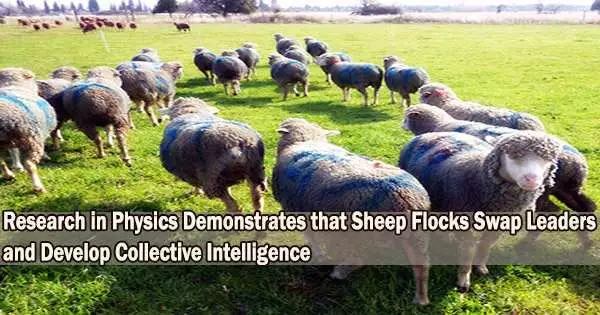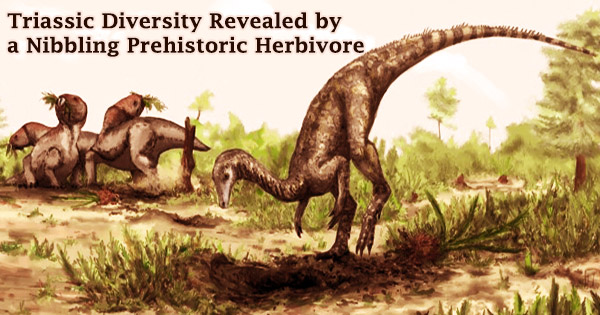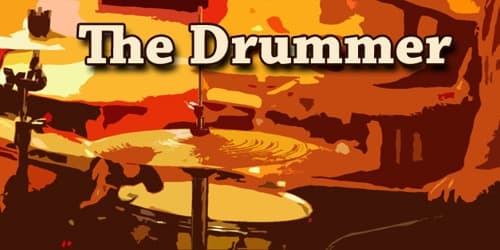Many biologists find the group behavior of animals to be an interesting subject of study. Understanding these common habits might occasionally serve as an inspiration for the creation of technologies that mimic nature and ways for encouraging constructive societal change.
Numerous studies characterize flocking behavior as a self-organized process in which members of a swarm continuously adjust their speed and direction to produce a “collective” motion. This viewpoint, however, ignores the hierarchical organization that many animal groups exhibit and the potential advantages of having a “leader” to show the way.
Luis Gómez-Nava, Richard Bon and Fernando Peruani, three researchers at Université Côte d’Azur, Université de Toulouse, and CY Cergy Paris Université have recently used physics theory to examine the collective behavior of small flocks of sheep. Their findings, published in Nature Physics, show that by alternating between the role of leader and follower, the flock ultimately achieves some form of “collective intelligence.”
“In most gregarious animal systems, collective motion is not a continuous process, but occurs in episodes: collective motion phases are interrupted, for instance, to rest or feed,” Peruani told Phys.org. “Nevertheless, most collective motion studies, including experimental and theoretical ones, consider groups that remain, from the beginning till the end, on the move. Furthermore, it is often assumed that flocking behavior requires individuals to continuously negotiate on the direction of travel.”
The main goal of Peruani and his colleagues’ most recent research was to examine collective motion in an animal system in a way that explicitly takes into account the temporal component of the observed self-organized process, in particular the fact that collective motion phases have a start and end.
Specifically, we are comparing the spontaneous behavior of groups of lambs, young sheep, and adult sheep, to investigate whether sheep learn to follow temporal leaders and to act as one over time. We are also investigating how groups behave in complex environments such as mazes or arenas with different food patches that can trigger a conflict of interests within group members. And more generally, we are investigating how collectives distribute and process information, using several statistical mechanics tools.
Fernando Peruani
The team also wanted to adopt a different, more comprehensive viewpoint that views the motion of the animal group as a series of “collective phases.”
“From this perspective, questions on the mechanisms of information sharing and consensus decision-making adopt a new dimension,” Peruani explained.
The spontaneous behavior of small groups of sheep was carefully observed by Peruani and his colleagues during their experiment over a range of time periods. They calculated the animals’ overall spatial order and orientation from the trajectories of individual flock members and examined correlations between the speeds at which different species travelled.
“We first showed that none of the existing flocking models, or extensions of them, is consistent with our observations,” Peruani said. “Then, we analyzed how information travels through the group, identifying an interaction network consistent with the data, and investigated which information is transmitted through this network.”
It’s interesting to note that Peruani and his colleagues discovered a very hierarchical interaction network mirroring the behavior of the flocks they watched. Additionally, they demonstrated that the position of the sheep within the group is the only information that spreads through this network.
Based on their data, the scientists created a model of collective animal motion that emphasizes two crucial cognitive functions. These procedures include choosing a leader who will guide the flock for a predetermined period of time and the means by which the flock will navigate.
“Importantly, each collective motion phase possesses a temporal leader,” Peruani explained, “We investigated the mathematical properties of the resulting model to identify the advantages of the unveiled collective strategy. I believe that the main contribution is the following: the animals, by using a hierarchical interaction network to move together for a while give full control of the group to the temporal leader, but there is also a rapid turnover of temporal leaders.”
The results essentially show that sheep switch between being the leader and the follower as they move in flocks. Therefore, leaders are only in charge of the group for a limited period of time before another sheep takes over.
“If a temporal leader has knowledge relevant to the group (e.g., the way out of a maze or the location of a food source) then, the temporal leader will be able to efficiently guide the group,” Peruani said “In this way, all group members take advantage of that knowledge. It is worth noting that this only works if all individuals follow the temporal leader without questioning.”
The information acquired by Peruani and his colleagues provided some fresh insight into the dynamics behind the collective movements of small flocks of sheep. However, additional research involving larger herds and various animals will be required to determine how far these results may be generalized.
“We wondered: if there is a temporal leader at every moment, how does the group share and process information that each individual member of the group may have? Can the group perform information pooling to improve its ability to accurately navigate to a distant place? In short, does the group exhibit collective intelligence?” Peruani said. “We proved that by regularly changing the temporal leader, the group is able to exhibit information pooling and collective intelligence.”
This team of academics’ most recent work underlines the likelihood that some naturally occurring collective animal methods benefit from both hierarchical and democratic organizational structures. Future research into the physics and biology behind these fascinating collective animal behaviors may be stimulated by their observations.
“We are now investigating collective motion using groups of different agents,” Peruani added. “Specifically, we are comparing the spontaneous behavior of groups of lambs, young sheep, and adult sheep, to investigate whether sheep learn to follow temporal leaders and to act as one over time. We are also investigating how groups behave in complex environments such as mazes or arenas with different food patches that can trigger a conflict of interests within group members. And more generally, we are investigating how collectives distribute and process information, using several statistical mechanics tools.”
















